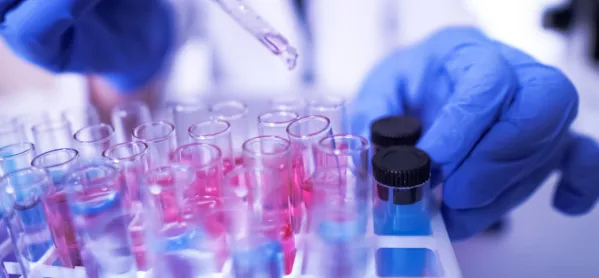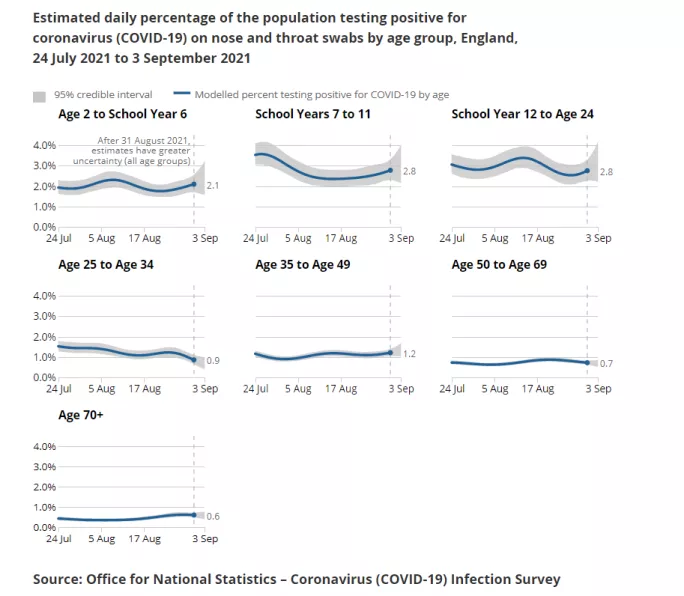Covid rates rose among school-age children in the week they started returning to the classroom for the autumn term, new data reveals.
Modelling the level of Covid-19 infections among different age groups in England in the week ending 3 September, the Office for National Statistics (ONS) said rates had increased for those aged 2 to school Year 11, and for those aged 35 to 49.
The percentage testing positive decreased for those aged 25 to 34 and 50 to 69, while the trend is uncertain for all other age groups.
Warning: DfE told to prepare for high Covid rates in schools
New term: Schools ‘could keep masks and social distancing’
Revealed: 4 in 5 teachers not reassured by CO2 monitors
Around one in 35 pupils in Years 7 to 11 is estimated to have had Covid in the week to 3 September, the joint highest positivity rate of any age group.
The news comes two weeks after it emerged that the government had been told by its own scientific advisers to prepare for a “high prevalence” of coronavirus in schools by the end of September.
In a consensus statement on Covid-19, published on 27 August, the Scientific Advisory Group for Emergencies (Sage) warned that it was “highly likely that exponential increases will be seen in school-attending age groups after schools open”.
Launching the government’s Back to School and College campaign last month, education secretary Gavin Williamson said the start of the autumn term would mark “the point when our focus can shift away from the disruption of Covid and on to learning, enrichment and recovery”.
But the NEU teaching union said secondary school leaders would want to consider using face masks and keeping social distancing where possible when students returned to the classroom.

